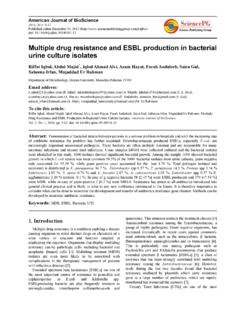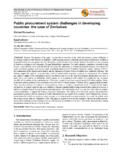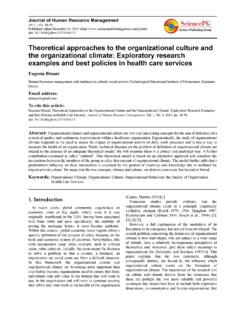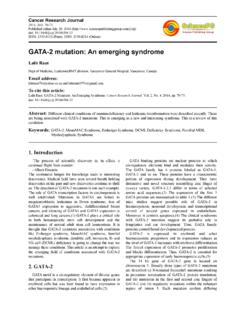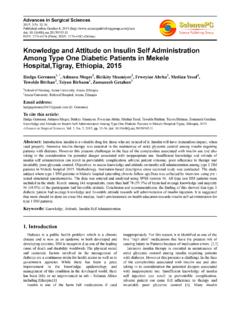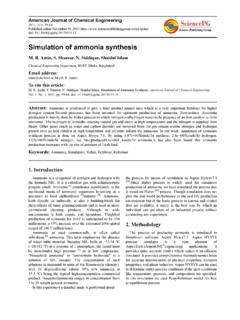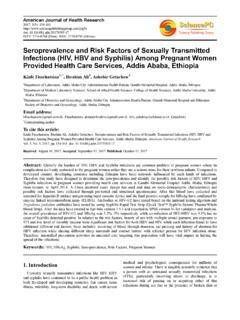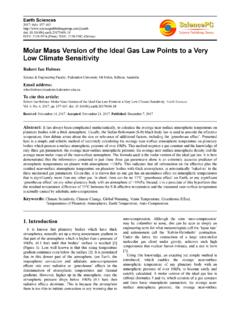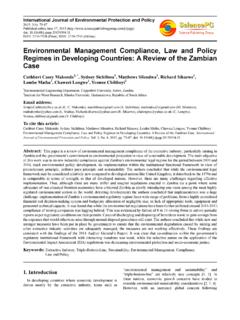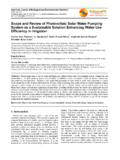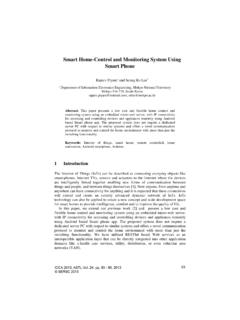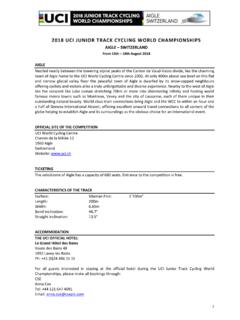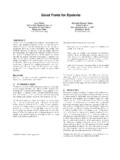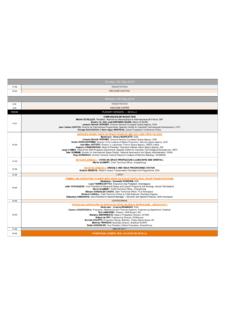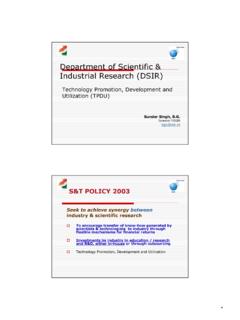Transcription of Load frequency control for interconnected power …
1 Automation, control and Intelligent Systems 2013; 1(4): 85-89 Published online August 10, 2013 ( ) doi: load frequency control for interconnected power system using different controllers Atul IkheP. G. Department, College of Engineering Ambajogai, Dist. Beed, Maharashtra, India Email address: (A. Ikhe)To cite this article: Atul Ikhe. load frequency control for interconnected power System Using Different Controllers. Automation, control and Intelligent Systems. Vol. 1, No. 4, 2013, pp. 85-89. doi: Abstract: This paper explores the potential of using soft computing methodologies in controllers and their advantages over conventional methods.
2 PID controller, being the most widely used controller in industrial applications, needs efficient methods to control the different parameters of the plant. As reported by several researchers, the conventional approach of PID controller is not very efficient due to the presence of non-linearity in the system of the plant. Also, the output of the conventional PID system has a quite high overshoot and settling time. The main focus of this work is on the controller to obtain good output frequency responses. The tuning of PID controller is necessary to get an output with better dynamic and static performance. The application of PID controller imparts it the ability of tuning itself automatically in an on-line process while the application.
3 The output response of PID-tuning is compared with I, PI and conventional PID controller and found reasonably good over these conventional controllers. Keywords: Conventional Controller, interconnected power System, load frequency control (LFC), PID Tuning, Tie-Line 1. Introduction The problem of controlling the real power output of genera ting units in response to changes in system frequency and tie-line power interchange within specified limits is known as load frequency control (LFC) [1]. The Objectives of LFC are to provide zero steady-state errors of frequency and tie-line exchange variations, high damping of frequency oscillations and decreasing overshoot of the disturbance so that the system is not too far from the stability [2].
4 The interconnected power system is typically divided into control areas, with each consisting of one or more power utility companies. Sufficient supply for generation of each connected area to meet the load demand of its customers. The above mentioned objectives are carried successfully in previous works by different authors using PI and PID controllers [4] & [5]. In this paper PID-tune controller is used for better frequency responses. This type of controller is used in power system so reducing the steady state error. System load is never steady using this controller these can be controlled. When uncontrolled case more oscillation, negative overshoot be observed but while comparing to conventional type controller PID and propose work result gives better performances of dynamic responses.
5 2. PID Controller There are many types of controller such like proportional, integral, derivative and combinational of these (PI, PID). PID Controller The block diagram of Proportional Integrative Deri vative (PID) controller is shown in Figure 1: Block diagram of a PID controller. The PID controller improves the transient response so as to reduce error amplitude with each oscillation and then output is eventually settled to a final desired value. Better margin of stability is ensured with PID controllers. The mathematical equation for the PID controller is given as [4] 86 Atul Ikhe: load frequency control for interconnected power System Using Different Controllers & [9].
6 Y(t)=)(tKpe+ deKit)(0 +)(tedtdKd (1) Where y (t) is the controller output and u (t) is the error signal. Kp, Ki and Kd are proportional, integral and derivative gains of the controller. The limitation conventional PI and PID controllers are slow and lack of efficiency in handling system non-linearity. Generally these gains are tuned with help of different optimizing methods such as Ziegler Nicholas method, Genetic algorithm, etc., The optimum gain values once obtained is fixed for the controller. But in the case deregulated environment large uncertainties in load and change in system parameters is often occurred. The optimum controller gains calculated previously may not be suitable for new conditions, which results in improper working of controller.
7 So to avoid such situations the gains must be tuned continuously. The tuning parameters are Proportional Gain (Kp) Larg er values typically mean faster response since the larger the error, the larger the Proportional term compensation. An excessively large proportional gain will lead to process instability and oscillation. Integral Gain (Ki) Larger values imply steady state errors are eliminated more quickly. The trade-off is larger overshoot: any negative error integrated during transient response must be integrated away by positive error before we reach steady state. Derivative Gain (Kd) Large r values decrease overshoot, but slows down transient response and may lead to instability due to signal noise amplification in the differentiation of the error.
8 Advantages of PID Controller They can perform poorly in some applications. PID controllers, when used alone, can give poor performance when the PID loop gains must be reduced so that the control system does not overshoot, oscillate or hunt about the control set point value. A problem with the Derivative term is that small amounts of measurement or process noise can cause large amounts of change in the output. 3. Model of Two Area power System Each area is assumed to have only one equivalent Generator and is equipped with governor- turbine system. They are the control signals from the controllers A two area model is adapted in the work is shown in [2] & [11].
9 Figure 2: Block diagram of two area power system. The terms showed in the Figure 2 are termed given below: fi :Nominal system frequency of ith area. [HZ] f I : Incremental frequency deviation of ith area. [HZ pu] Tsi : Speed governor time constant of i th area [sec.] Kgi : Gain of speed governor of i th area Ri : Governor Speed regulation of the of ith area [ Z H ] Tti : Governor Speed regulation of the of ith area [ Z H ] Kti : Gain of turbine of ith area Kpi : Gain of power system (generator load ) of i th area. [ Z H ] Kpi = 1/D Tpi Gain of power system (generator load ) of i th area. [ Z H ] Tpi = 2Hi /Difi Hi : Inertia constant of i th area.
10 [MW-sec/MVA] PGi : Incremental generator power output change of ith area .[ pu MW] Pti : Incremental turbine power output change of i th area . [pu MW] Ki : Gain of controller of ith area. The plant for a power system with a non-reheated turbine consists of three parts: Governor with dynamics: Gg(s)=11+TGs. (2) Turbine with dynamics: Gt(s)=11+TTs. (3) load and machine with dynamics: Gp(s)=1+TPsKp. (4) Now the open-loop transfer function without droop characteristic for load frequency control is Automation, control and Intelligent Systems 2013; 1(4): 85-89 87 GpGtGgP=~=)1)(1)(1(+++TGsTTsTPsKp.
